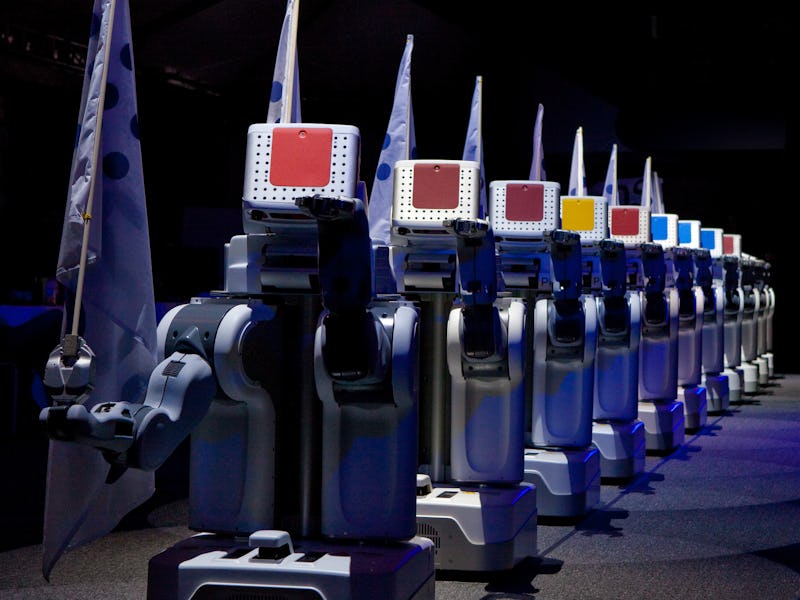Robot Operating System Is the Future of Software for Autonomous Devices
Open source has never been more critical to the success of technology than it is today.

When most people think about robotics, they think about large metal appendages coming together with swarms of wires to create a lanky, humanoid frame. What people don’t always realize is that making a robot move has as much to do with programming as it does with engineering. We all laughed at the blooper reel of biped bots at the DARPA Robotics Challenge keeling over like they’d just been struck by lightning. But in truth, it’s amazing those teams got robots to do even that much. And the software running those bots — hampered as it may have been by their physical forms — seems to have been working. That’s not just a silver lining. That’s why the cloud matters.
Right now, the most critical bit of software for operational robots is the fittingly named Robot Operating System, or ROS, a framework of programming tools used to write and develop robot software. It essentially works as a kind of open-source system providing OS-like services designed specifically for robotics — think: hardware abstraction, device control, implementation of common functionalities, and data package management.
ROS was originally developed by the Stanford Artificial Intelligence Laboratory in 2007, to support the lab’s projects (specifically the STAIR Robot). From 2008 to 2013, development on ROS primarily took place at the Menlo Park, California-based research lab Willow Garage. In early February, ROS was slowly transformed into an open source ecosystem. From there, ROS development has skyrocketed, thanks to the wide number of groups — industrial and academic alike — now utilizing it and modifying it for their own robotics projects.
This surge has opened up the ROS ecosystem in a way that puts it on the path to becoming the Linux of robotic software. Over $150 million in venture capital funding was invested in ROS-utilizing businesses. About 9 million ROS packages were downloaded that same year, and it found its way into systems ranging from the DARPA Robotics Challenge (where 18 teams used ROS), to NASA’s Robonaut.
The fact that ROS is open source falls in line with a string of recent A.I. and robotics developments. The most important is the founding of OpenAI by Elon Musk and several other Silicon Valley bigwigs, to make A.I. research and development more accessible among scientists around the world. The idea behind OpenAI is to act as a counterweight to the ivory tower-type proprietary work going on at big companies — in which the technology cannot be scrutinized or judged by the scientific community at large.
Indeed, making something open source has its flaws — the company who created it cannot monopolize on it as effectively — but it tends to allow tech architecture to thrive in ways that are often unanticipated. Case in point: Google’s Android, which has totally transformed what people can do with smartphones, tablets, and devices that fall under the Internet of Things. ROS may soon find itself to be a household name the same way Android has.